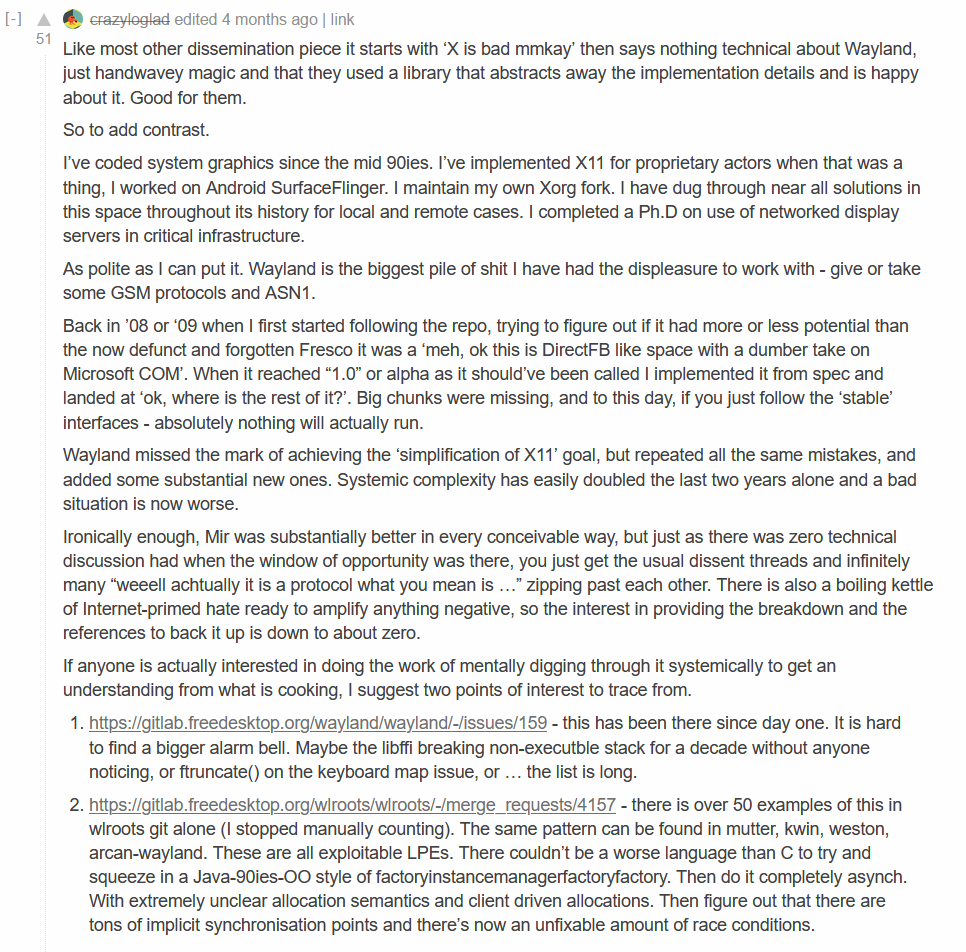this post was submitted on 02 Jan 2024
3 points (100.0% liked)
Linux
59004 readers
373 users here now
From Wikipedia, the free encyclopedia
Linux is a family of open source Unix-like operating systems based on the Linux kernel, an operating system kernel first released on September 17, 1991 by Linus Torvalds. Linux is typically packaged in a Linux distribution (or distro for short).
Distributions include the Linux kernel and supporting system software and libraries, many of which are provided by the GNU Project. Many Linux distributions use the word "Linux" in their name, but the Free Software Foundation uses the name GNU/Linux to emphasize the importance of GNU software, causing some controversy.
Rules
- Posts must be relevant to operating systems running the Linux kernel. GNU/Linux or otherwise.
- No misinformation
- No NSFW content
- No hate speech, bigotry, etc
Related Communities
Community icon by Alpár-Etele Méder, licensed under CC BY 3.0
founded 6 years ago
MODERATORS
you are viewing a single comment's thread
view the rest of the comments
view the rest of the comments

This is not a case of old people. Wayland genuinely lacks features. People of all ages find it trash.
Relatively new project lacks features 😱
16 years is not relatively new by any definition
It is relatively new compared to X.
It is designed to lack features. It has a purposefully limited scope. Bashing it for it's goal is weird.
I believe this is called cope
Nope.
Replacing something featurful with something minimal is silly. The replacement needs to solve the users problems at least as well as the previous solution did.
Decomposing the solution into smaller simpler parts is fine, but you can't just solve part of the problem and expect the users to be happy about it.
Wayland's biggest issue is that it was born out of developer frustration, rather than solving a user problem. As such, users have little reason to adopt it.
Unless those features just plain don't work well in the 21st century. Looking squarely at X11's network capabilities here, most of which were designed before encrypted remote access became the norm.